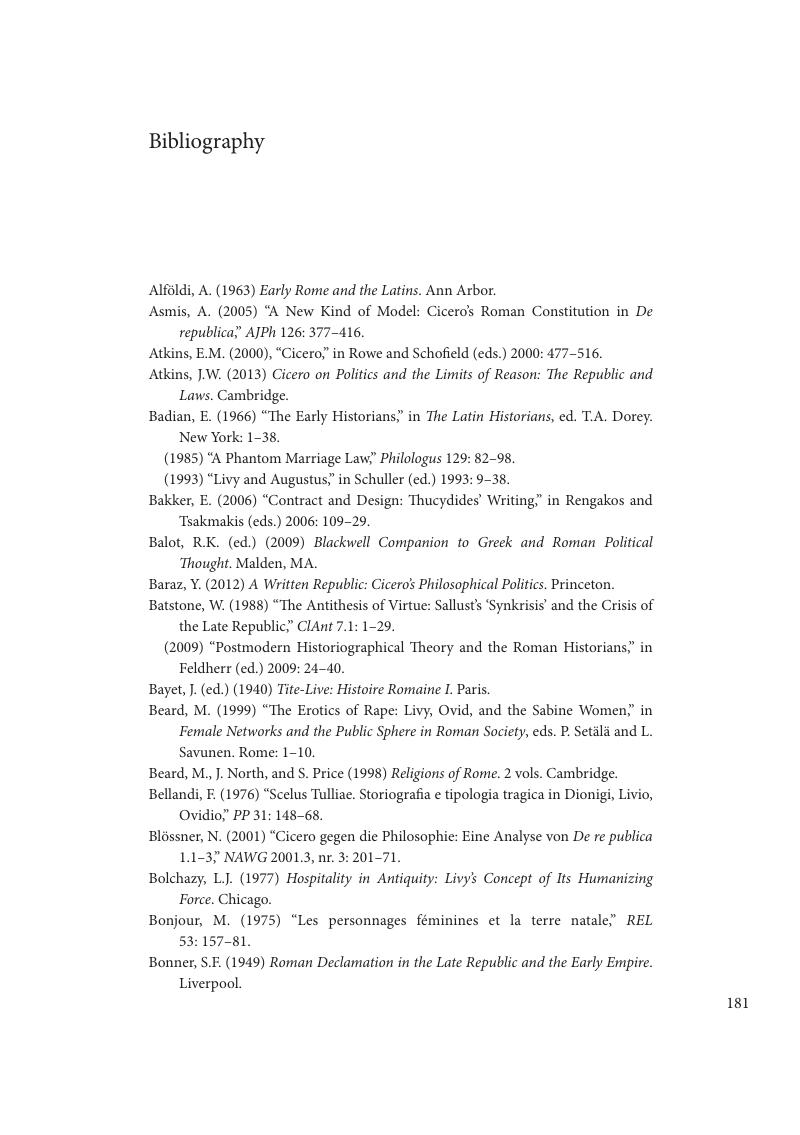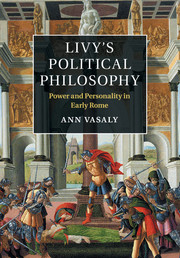Book contents
- Half title page
- Title page
- Copyright page
- Dedication
- Contents
- Preface
- Glossary
- Introduction: Livy and Domestic Politics
- 1 The Historiographical Archaeology
- 2 Livy’s Preface: A Reader’s Guide to the First Pentad
- 3 Monarchy and the Education of the Roman People
- 4 Tyranny and the Tyrannical Temperament
- 5 The Best Citizen and the Best Orator
- 6 The Roman People and the Necessity of Discord
- Conclusion: Livy’s “Republic”
- Notes
- Bibliography
- Index
- Index
- References
Bibliography
Published online by Cambridge University Press: 05 March 2015
- Half title page
- Title page
- Copyright page
- Dedication
- Contents
- Preface
- Glossary
- Introduction: Livy and Domestic Politics
- 1 The Historiographical Archaeology
- 2 Livy’s Preface: A Reader’s Guide to the First Pentad
- 3 Monarchy and the Education of the Roman People
- 4 Tyranny and the Tyrannical Temperament
- 5 The Best Citizen and the Best Orator
- 6 The Roman People and the Necessity of Discord
- Conclusion: Livy’s “Republic”
- Notes
- Bibliography
- Index
- Index
- References
Summary

- Type
- Chapter
- Information
- Livy's Political PhilosophyPower and Personality in Early Rome, pp. 181 - 194Publisher: Cambridge University PressPrint publication year: 2015



